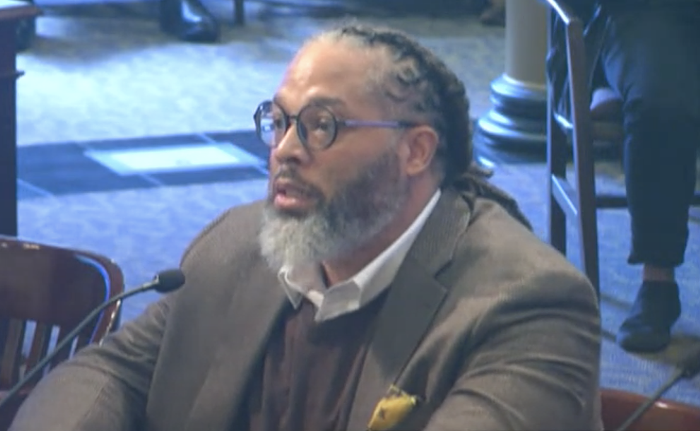"So it's about five years ago, it's a rainy afternoon and I'm driving down 82nd Avenue and I notice that the retirement home had closed," says Mayor Sam Adams to the crowd gathered on Friday, April 8, at Milepost 5 (MP5)—an "intentional community" designed to provide artists and creatives with affordable live-work space.
"I had just unexpectedly won a position on the Portland City Council, and I had campaigned with a lot of interaction with the arts and culture community," explains Adams. "And what I heard time and time again was affordable [live-work] space for artists... and I connected the two dots...."
These days, MP5 bustles within the retirement home's husk. In late 2008, the Lofts building opened, offering condos for purchase. Friday's ribbon-cutting ceremony marks the completion of the second and final building, the Studios, an all-rental, dorm-style building boasting 96 live-work spaces for $200-400 per month (all are occupied, with a growing waitlist).
But MP5 has become more than just affordable housing for artists. Occupying the first floor of the Studios are galleries featuring both resident and outside artists, retail spaces, a community workshop, a chapel turned performance space, and a dining hall-style restaurant. Artists ranging between the ages of 20 and 60 mill about, chatting with neighbors and greeting visitors; musicians gather in the halls for impromptu performances; actors rehearse lines; others work in solitude or small groups with their doors cracked.
But things haven't always been this way: The mayor's utopian vision has seen its hiccups. On move-in day, October 1, 2010, it was clear the Studios were still very much a work in progress. One man moved in to find that a pipe had been leaking into his room for who knows how long (it smelled palpably unlivable from the doorway). There were hot water issues, a problem that MP5 Creative Director Gavin Shettler says persisted in various iterations through Valentine's Day. Despite a fresh coat of paint and mostly polished common areas, general maintenance on individual rooms seemed to be ramping up only as residents moved in. And then came snags in settling community rules—some people wanted more structure, while others were allergic to order.
In the process, Shettler says there were a total of 15 turnovers, and rent abatements were awarded to those who filed complaints (something tenants seem universally grateful for). Residents like Peter Turner, a 28-year-old web designer and artist of various mediums, says cheap rent and a creative environment are what kept him here through all of it—reporting an alleviation in growing pains as community members commit to making MP5 comfortable for everyone.
In the grand scheme of things, Shettler says MP5 has finally arrived at the start. And he reports talks of developing more affordable housing communities for artists. "Every neighborhood in Portland could use a Milepost 5," says Shettler.
But first, this MP5 will need to prove itself commercially viable—after all, it's a for-profit endeavor (funded by ArtPlace Development, a partnership between Portland Affordable Housing Preservation Trust and Beam Development), and the Lofts building is still only half occupied. Regardless, in a time when public funding for arts is looking grimmer by the day, MP5 is finally off the ground, and it's evidence that Mayor Adams' legacy could be composed in part by his ability to court private-sector investment in arts infrastructure. Now if only we could drum up a few thousand jobs for creatives—then we'd really have a Portlandia on our hands. MATT STANGEL













